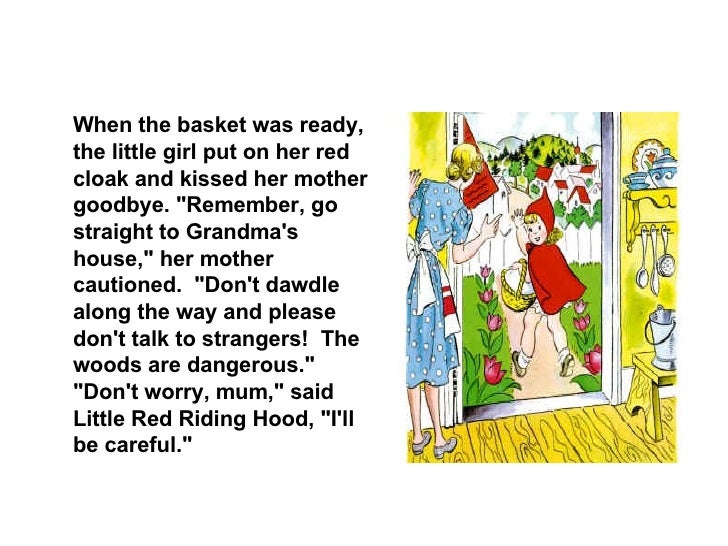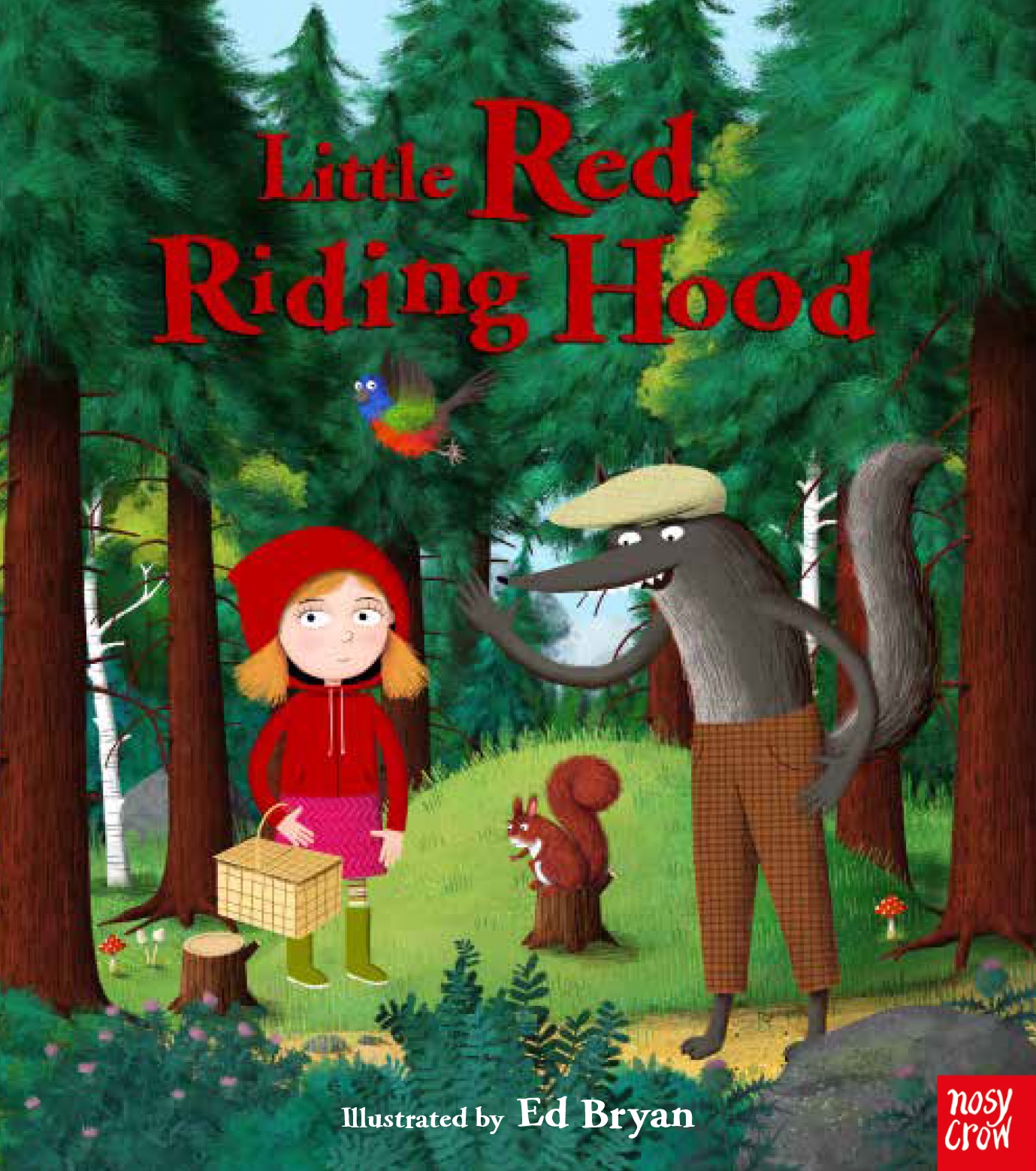

Because the writer does not specify the fate of the wolf at the end of the story, he allows the readers to imagine multiple possibilities to what will happen to wolf. And Little Red Riding Hood never saw or heard from him again” (46). McPhail’s story closes with “the last time Little Red Riding Hood saw the wolf he was running down the path, followed closely by a hostile crowd. The “Little Red Riding Hood” that McPhail wrote fits the criterion of offering boundless possibilities for readers (Guidarini). Some fairy tales have happing endings, but others leave with a thoughtful ending that can provoke or enlighten the readers. Since different versions of the same fairy tale approach the story differently, the content of those versions may vary. Both two versions thus feature the same fairy-tale element of the weak prevailing over the strong. By the time the wolf realizes the girl has escaped, she has reached her house safely (33).

Similarly, in the Delarue’s version of Little Red Riding Hood, Little Red Riding Hood also figures out a way to escape: she lies, telling the wolf that she wants to go outside and relieve herself. In addition, she gains help from the woodcutter and kind crowd, who chase the wolf. In McPhail’s story, Little Red Riding Hood successfully escapes from the wolf because of her quick movements and tiny body to get through the door (46). In this way, the writer motivates the readers to empathize with the character and to feel relief and comfort when she finally outsmarts the strong wolf. In each “Little Red Riding Hood” story, Little Red Riding Hood is always characterized as an innocent, naive girl. McPhail’s version of “Little Red Riding Hood” also contains the typical fairy-tale element of “the weak prevailing over the strong” (Guidarini). Therefore, this version of “Little Red Riding Hood” is able to qualify as a fairy tale. These events can only be explained by the existence of magic. On the surface, everything in the story seems normal, but a deeper analysis shows that the plot is not logical. Her rescuers just suddenly appear (McPhail 46). Here come the magic which I find to be interested: How could a sick grandmother run faster than a fierce wolf? Besides that, how could she lock the closet’s door from inside? And how could a closet even have a lock from inside if it is in reality? Moreover, at the end of the story, when Little Red Riding Hood gets the chance to escape, she jumps out and yells for help. When the grandmother lets the wolf in the house, she is terrified after she discovers her mistake therefore, she climbs into the wardrobe and locks the door (McPhail 45). First, the story includes magical elements. McPhail’s version of “Little Red Riding Hood” contains other aspects that Bernheimer attributes to fairy tales. None of them get eaten or killed at the end therefore, because most of these versions of Little Red Riding indeed end with “frothy” endings, I believe McPhail’s version also qualifies as a fairy tale. Little Red Riding Hood in those three versions are all saved from danger by her intelligences. Nevertheless, neither of the versions of “Little Red Riding Hood” which written by Paul Delarue, Jacob and Wilhelm Grimm, and Isabelle Change, are not frothy stories. However, Bernheimer notes that fairy tales are not always frothy stories of princesses getting saved and married, there are also boys who get saved and married, and girls who get married and eaten, and boys who get married and turned into dogs”(Guidarini). They get saved by woodcutter and live peacefully ever after (46). In my opinion, McPhail’s version of “Little Red Riding Hood” can be defined as a fairy tale in Bernheimer’s terms because it presents a world suffused by magic one in which the weak prevail over the strong and offers boundless possibilities to readers (Guidarini).Īt the end of McPhail’s version of “Little Red Riding Hood,” Little Red Riding Hood and her grandmother both manage to escape because Little Red Riding Hood calls for help, and the helpers come in time. For example, the version of “Little Red Riding Hood” written by David McPhail has different components than those that are outlined by Bernheimer. While some of these variations have only been edited slightly, others have been changed entirely, thus raising the question of whether or not they still fit within the genre of the fairy tale as described by Kate Bernheimer.

Given its popularity, it has been translated into many different languages and converted into diverse versions. “Little Red Riding Hood” is one of the most famous and universal fairy tales in the world most of us have read or heard it during our childhood.

Categorizing McPhail’s “Little Red Riding Hood” as a Fairy Tale


 0 kommentar(er)
0 kommentar(er)
